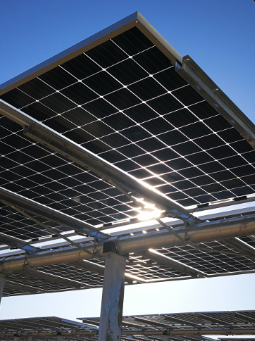Solar systems tested
 Research engineers say double-sided solar panels which tilt to follow the sun may be the most cost-effective model.
Research engineers say double-sided solar panels which tilt to follow the sun may be the most cost-effective model.
A team at the National University of Singapore has found solar power systems with double-sided (bifacial) solar panels - which collect sunlight from two sides instead of one - and single-axis tracking technology that tilts the panels so they can follow the sun are the most cost effective to date.
They determined that this combination of technologies produces almost 35 per cent more energy, on average, than immobile single-panel photovoltaic systems, while reducing the cost of electricity by an average of 16 per cent.
“The results are stable, even when accounting for changes in the weather conditions and in the costs from the solar panels and the other components of the photovoltaic system, over a fairly wide range,” says first author Carlos Rodríguez-Gallegos.
“This means that investing in bifacial and tracking systems should be a safe bet for the foreseeable future.”
There has been a lot of focus on boosting energy output from solar power systems by improving solar cell efficiency, but the energy yield per panel can also be increased in other ways.
Double-sided solar panels produce more energy per unit area than their standard counterparts and can function in similar locations, including rooftops.
The research team tested this idea using data from NASA's Clouds and the Earth's Radiant Energy System (CERES) to measure the total radiation that reaches the ground each day. They then accounted for the influence of the sun's position on the amount of radiation a solar panel can receive based on its orientation, and calculated the average net cost of generating electricity through a photovoltaic system throughout its lifetime.
This showed that double-sided solar panels combined with single-axis tracking technology would be most cost effective almost anywhere on the planet, although dual-axis trackers - which follow the sun's path even more accurately but are more expensive than single-axis trackers - are a more favourable substitute in latitudes near the poles.
But despite this technology's clear benefits, Mr Rodríguez-Gallegos does not expect this style of photovoltaic system to become the new standard overnight.
“The photovoltaics market is traditionally conservative,” he says.
“More and more evidence points toward bifacial and tracking technology to be reliable, and we see more and more of it adopted in the field. Still, transitions take time, and time will have to show whether the advantages we see are attractive enough for installers to make the switch.”







 Print
Print